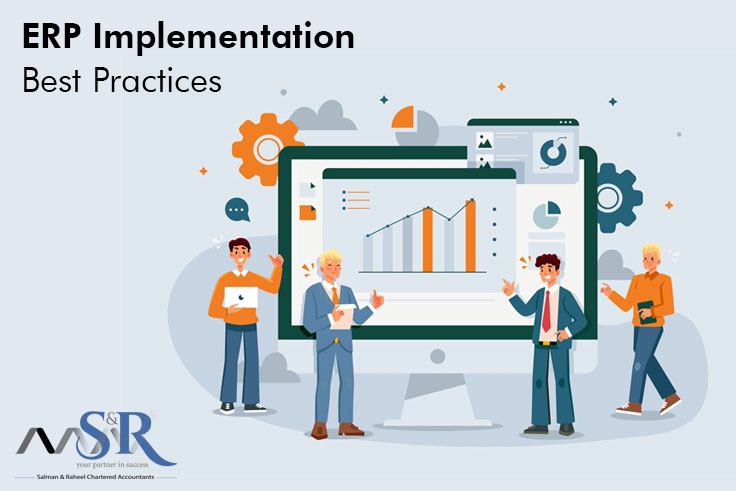
Implementing an Enterprise Resource Planning (ERP) system is a significant undertaking for any organization. It promises Contemporary processes, improved efficiency, and better data management. However, without proper planning and execution, ERP projects can become daunting and costly. To ensure a successful ERP implementation, it’s crucial to follow ERP best practices and adopt a structured approach. Let’s delve into the best practices for ERP implementation to help guide you through this complex process.
Step 1: Comprehensive Planning
ERP Best Practices Implementation:
Before diving into ERP implementation, thorough planning is essential. Identify your organization’s needs, goals, and objectives. Establish a project scope, timeline, and budget. Engage key stakeholders from various departments to gather requirements and insights. A well-defined plan serves as a roadmap for your ERP implementation project management, ensuring everyone is aligned and aware of their roles and responsibilities.
Step 2: Selecting the Right ERP System
How to choose ERP?
Choosing the right ERP system is a critical decision. Evaluate various ERP solutions based on your organization’s requirements, scalability, and budget. Consider factors like industry-specific functionalities, user-friendliness, and vendor support. Engage in demos, request references, and analyze the total cost of ownership (TCO) to make an informed decision. The right ERP system should align with your business needs and facilitate successful ERP implementations.
Step 3: Data Management and Migration
Best Practices in ERP Implementation:
Data is the backbone of any ERP system. Clean, accurate, and relevant data is crucial for a successful ERP implementation. Conduct a thorough data audit to identify inconsistencies and duplicates. Develop a data migration strategy and plan for transferring data from legacy systems to the new ERP system. Ensure data integrity throughout the migration process and validate data post-migration to minimize errors and disruptions.
Step 4: Customization vs. Configuration
ERP Tips:
While it may be tempting to customize the ERP system to fit specific requirements, excessive customization can lead to complications and increased costs. Prioritize system configuration over customization to leverage standard functionalities and best practices in ERP. Customize only when necessary and ensure that customizations align with long-term business goals and maintain system upgradability.
Step 5: Training and Change Management
Best Practices for ERP Implementation
User adoption is crucial for the success of any ERP implementation. Provide comprehensive training sessions for end-users to familiarize them with the new ERP system. Develop a change management plan to address resistance and facilitate a smooth transition. Engage employees through communication, support, and feedback mechanisms to ensure they are comfortable with the new system and its benefits.
Step 6: Continuous Monitoring and Support
Successful ERP Implementations
Post-implementation, continuous monitoring, and support are essential to address issues, optimize processes, and ensure system performance. Establish key performance indicators (KPIs) to measure ERP system effectiveness and ROI. Provide ongoing support and training to address user queries and challenges. Regularly review and update the ERP system to align with evolving business needs and industry trends.
Step 7: Review and Optimization
ERP Implementation Best Practices
Regularly review and assess the ERP system’s performance, functionality, and alignment with business objectives. Identify areas for improvement and optimization based on user feedback, system analytics, and changing business requirements. Continuously iterate and refine the ERP system to enhance efficiency, productivity, and user satisfaction.
Step 8: Celebrate Success and Future Planning
Best Practices ERP Implementation
Upon successful ERP implementation, celebrate achievements, acknowledge contributions, and recognize the efforts of the project team and stakeholders. Reflect on lessons learned and document best practices for future reference. Start planning for future upgrades, expansions, or integrations to further leverage the ERP system’s capabilities and support organizational growth.
CONCLUSION:
Implementing an ERP system is a complex and challenging endeavor that requires careful planning, execution, and ongoing support. By following these ERP best practices, organizations can navigate the implementation process more effectively and achieve successful ERP implementations. Remember, ERP implementation is not just a one-time project but an ongoing journey of continuous improvement and optimization. Embrace change, adapt to new technologies, and focus on delivering value to drive long-term success with your ERP system.


